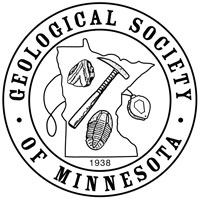Seminar Lab Date:
Seminar Lab presenter:
Seminar Lab Subject:
Seminar Lab Location :
A recording of this lecture is available on the Geological Society of Minnesota YouTube channel . If you are interested, please subscribe to this channel. Thank you.
Seminar Lab Details:
Abstract: North America’s lakes, great and small, have shaped the history, economy, and culture of the upper Midwest and Canada. The vast majority of these lakes were created by the waxing and waning of ice sheets over the last two million years. The relative importance of the varying mechanisms responsible for their distribution are hard to assess, but the nature of the underlying bedrock, the pre-glacial topography, and ice streaming must have played a role. As is the case with so much in the field of geology, evidence diminishes with time, and broad strokes may be necessary when interpreting the past. This contrasts with the fantastically detailed landforms and sediments of the Wisconsin deglaciation, upon which I focus my research. I will highlight two such records: the beach ridges of the once greater lakes (as revealed by lidar DEMs), and varves, annually-laminated lake sediment. Old beach ridges reveal the nature of crustal rebound, which continues today and affects global sea level rise. Varves archive how the former ice sheet responded to climate change, which is useful for predicting the response of our ice sheets to modern warming.
Biography: Andy is a transplant from Indiana, who fell in love with Minnesota’s lake country at age 15 during his first canoe trip “up north”. He followed this calling by pursuing a career studying lakes and their sediments. He completed his graduate work at the Limnological Research Center (U of MN) and Large Lakes Observatory (UMD). Today his principal research efforts reconstruct the history of the former ice sheet through study of the pro-glacial lakes that rimmed its margin.
